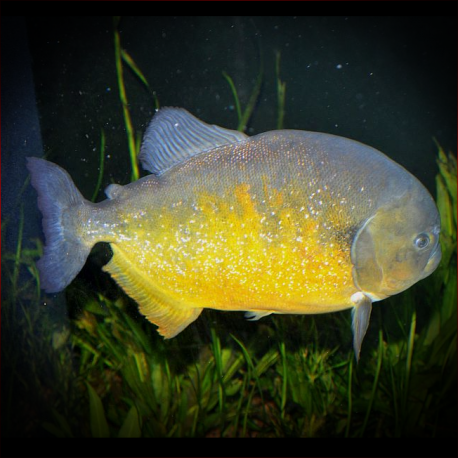More info
Datasheet
| Minimum Tank Size | 10000 litres / 2641.72 US gallons |
| Maximum Size | 35.0cm / 13.78inches |
| Temperature | 20°C / 68.00°F - 28°C / 82.40°F |
| Hardness | 2.02dgH / 36ppm - 20.00dgH / 357ppm |
| pH | 6.0-8.0 |
General Description
Pygocentrus Piraya, commonly known as Piraya, belongs to the family Serrasalmidae under the order Characiformes. These fish are known for their predatory nature and distinct characteristics such as a compressed body shape and sharp serrae on their ventral surface. Piraya can grow up to 35.0cm in size and are mainly found in the rio São Francisco watershed in eastern Brazil.
Aquarium Setup
For Piraya, a minimum tank size of 10,000 litres is recommended. These fish can be maintained in bare-bottomed setups or with aquarium gravel or sand substrates. Plants may be consumed, especially during spawning. Lighting preferences range from dim to strong. It is crucial to use oversized external filters due to their high waste production. Weekly water changes of 30-50% are advised, with careful maintenance and handling procedures due to their aggressive nature.
Behaviour
Piraya are best kept alone unless in a significantly large aquarium to prevent aggression among mature individuals. When well-fed, they may tolerate smaller fish. However, in confined spaces, Piraya can display extreme aggression towards each other, necessitating spacious conditions for group maintenance.
Feeding and Diet
Piraya are opportunistic generalists, consuming live fish, aquatic invertebrates, insects, nuts, seeds, and fruits. Their jaws contain sharp teeth used to puncture, tear, chop, and crush their prey. In aquariums, juveniles can be fed chironomid larvae, small earthworms, and prawns, while adults accept fish flesh, prawns, mussels, and larger earthworms. Avoid feeding mammalian or avian meat and use caution with feeder fish to prevent health issues.
Reproduction & Dimorphism
Reproduction in Piraya is unrecorded but likely similar to their relatives, such as P. nattereri, with two annual reproductive seasons. Females typically grow larger than males, exhibiting a more rounded body shape, especially during spawning periods.
Habitat and Distribution
Piraya are found in major river channels, tributaries, floodplain lakes, and artificial reservoirs in the rio São Francisco watershed in Brazil. They may also inhabit introduced populations in specific areas, such as the Pedra do Cavalo reservoir in Bahia state.
Etymology
The genus name Pygocentrus is derived from the Greek words "pūgḗ" meaning "rump" and "kéntron" meaning "sharp point" due to their serrated abdomen. The specific epithet Piraya comes from a local vernacular name for the fish.

